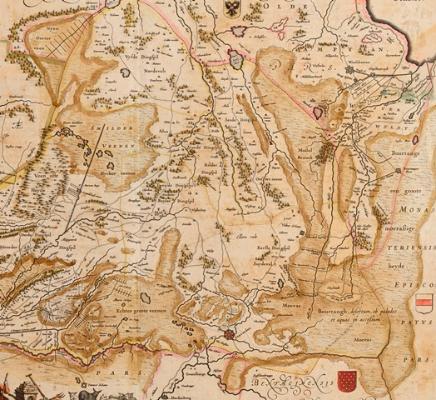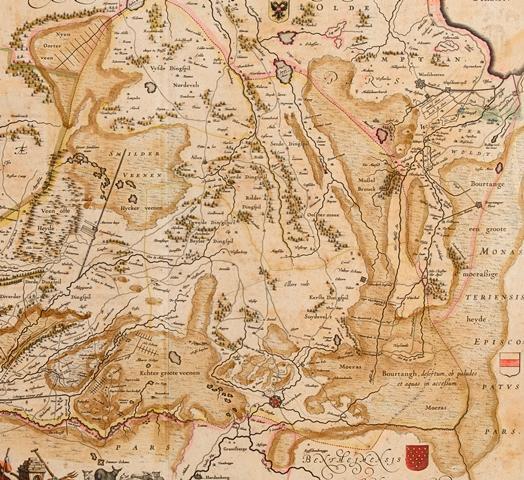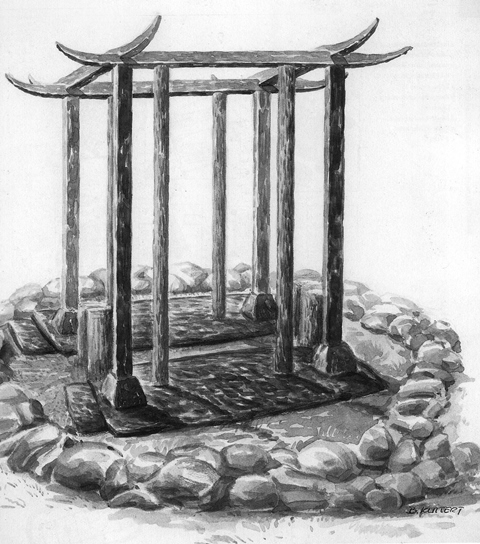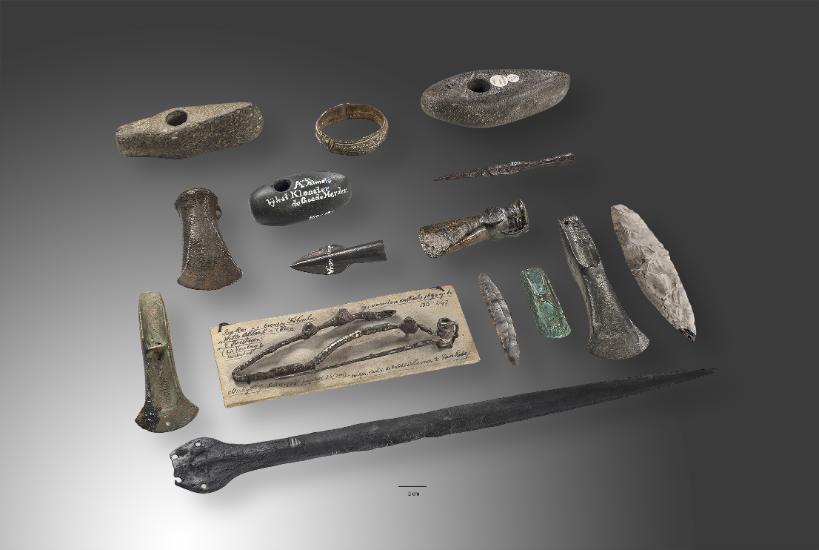In This Section
Peatland Archaeology in the Netherlands: Towards a Novel Approach

Peatland Archaeology in the Netherlands: Towards a Novel Approach
Our third blog post is by invited speaker, archaeologist Dr Roy Van Beek, Wageningen University, The Netherlands. The Low Countries are internationally renowned for their wetlands and water management schemes. Vast areas of the country were once covered by marshes, fens and bogs. The Bourtanger Moor, with an estimated surface of 1600 square kilometers, may even have been the largest raised bog of Europe before commercial peat exploitation started in the 16th century.[i] 
17th Century map showing Bourtanger Moor
Dutch bogs have produced many spectacular archaeological finds, such as bog bodies, wooden trackways and the famous Bronze Age sanctuary of Bargeroosterveld [ii]. These provide key data that cannot be retrieved anywhere from other (dry) landscape contexts.

Reconstruction drawing of the Bargeroosterveld Sanctuary (c. 1250 BC)
As such, the Netherlands are ideally suited to make a key contribution to wider discussions on prehistoric and early historic human-land relations, and as the vast majority of finds have a sacrificial character - especially the human perception and relationship to these areas through time.

Finds from the bog: Neolithic stone axes, Bronze Age rapier and axes, Iron spearhead and Medieval bracelet
In this view it is remarkable that Dutch bog archaeology has hardly moved beyond studies intended for a general audience, environmental determinism and a fixation on specific sites and object categories, rather than focusing on contextualisation in the widest sense of the word (e.g. studying the ideological and socio-economical position of bogs, reconstructing their physical appearance and development through time, integrating cultural wetland and dryland patterns). One could argue that some of these issues relate to the early discovery of most archaeological bog finds. After all, the very limited remaining Dutch bog areas (probably representing less than 10 % of the original peat cover) are nature reserves now, and hardly any new exciting discoveries have been made for decades. Therefore, most archaeological finds were done in a completely different scientific era. However, this is too simplistic. Especially the landscape-related problems reflect a wider academic issue: the lack of integration of data from the humanities and 'sciences'.
In order to move forward, truly interdisciplinary research designs are of the utmost importance, and given the current threats that European bogs are witnessing these should also aim at designing proactive strategies for the sustainable management of bog-related cultural phenomena and historical bog (reclamation) landscapes. If we do not succeed in that we are at risk of losing essential parts of our cultural heritage without being identified properly. It is very exciting to see that these themes are among the key topics to be addressed at the Transdisciplinary Conversation on Peatlands in Cork.
[i] Casparie, W.A. (1972), Bog development in southeastern Drenthe (The Netherlands), PhD thesis Groningen University.
[ii] Waterbolk, H.T. en W. van Zeist (1961), A Bronze Age sanctuary in the raised bog at Bargeroosterveld (Dr.), Helinium 1, 5-19.
Irish Peatland Archaeology Across Time (IPeAAT)
Contact us
